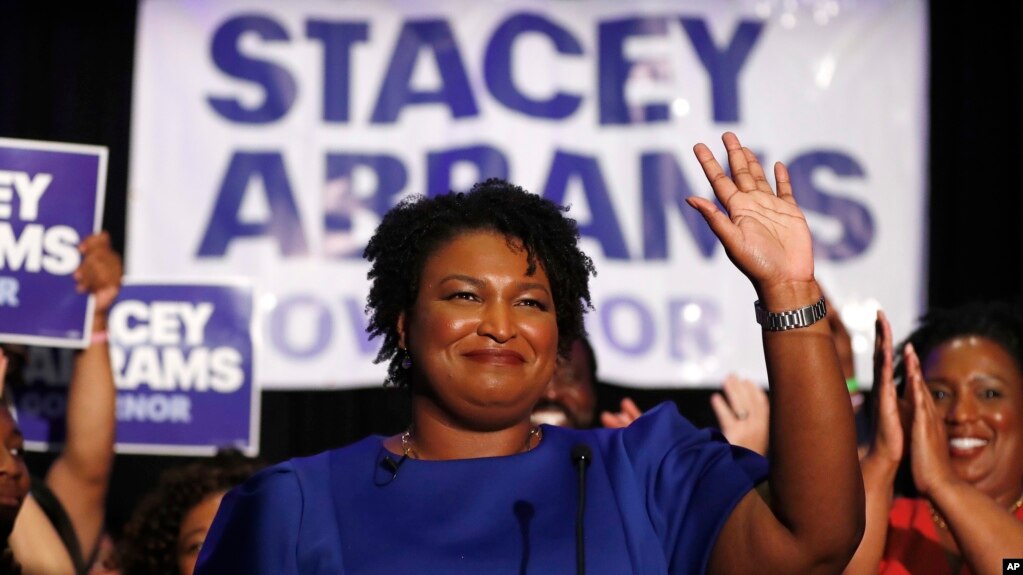
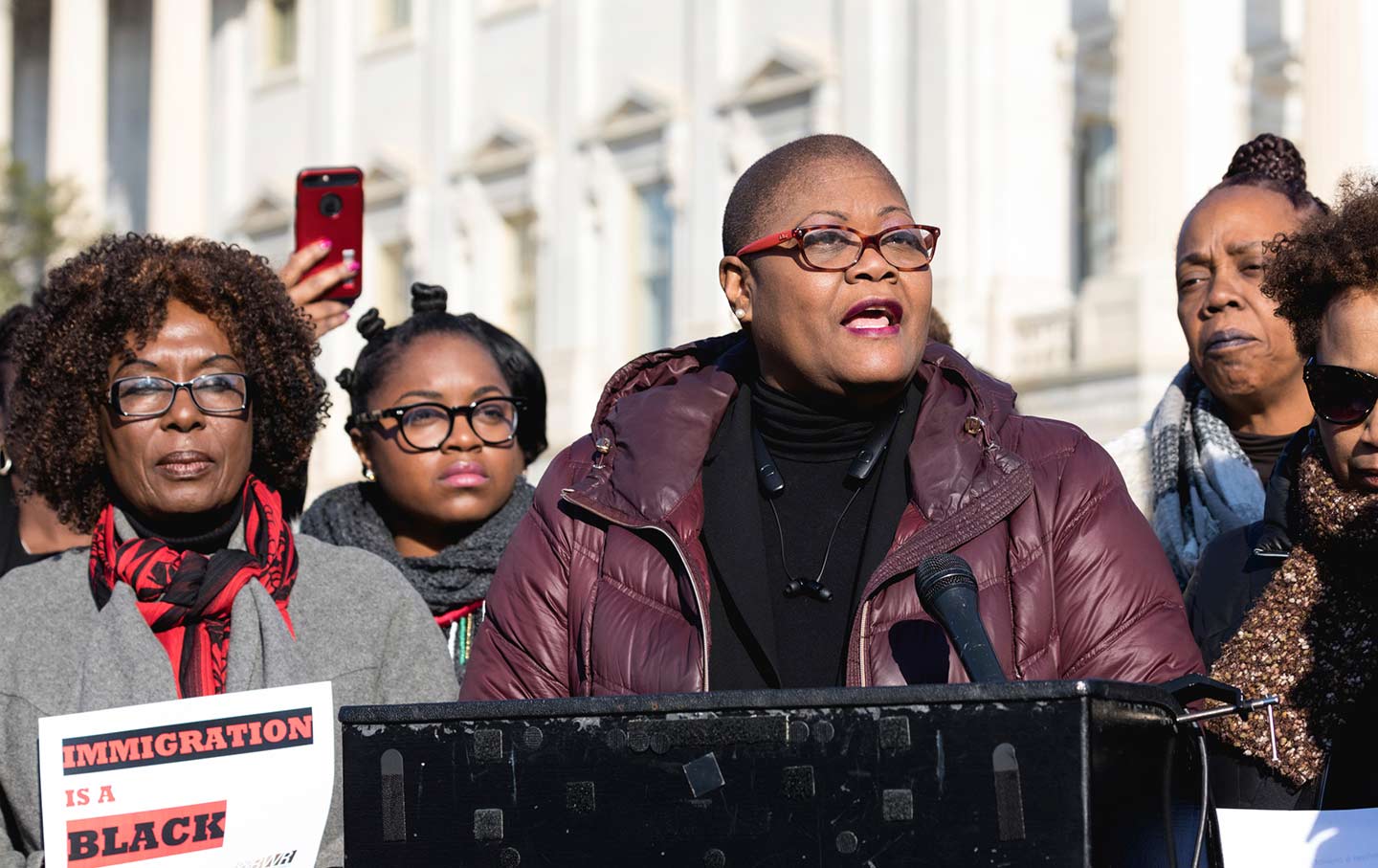
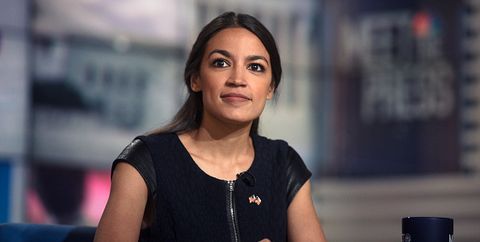

The 2018 Mid Term Elections
When we think about elections and politics, we should take them seriously. We know how corporations (with ties to the banking interests, the CFR, etc.) influence both major parties. We know of the compromisers in both major parties too. That is why we should maintain our political independence. Yet, elections do matter. The reason is that elections and politics effect how communities receive vital resources, how much voting rights we do receive, and how powerful health care will be for human beings. Even school board officials and judges (individuals vote these individuals into office too) determine how laws are created plus interpreted by virtue of the voting process. Grassroots organizing is a key part of any movement for social change well. In other words, meetings in neighborhoods must exist. There should be programs to help the poor and working class people including all oppressed human beings in general. These human beings must be part of the decision making process in formulating solutions. That’s commonsense since the community must have a leading role in establishing beneficial policy for the people. Not to mention that voting is not enough. Change is undoubtedly caused by social movements working in the streets, factories, schools, parks, urban areas, rural areas, the suburbs, and many different locations nationally plus internationally. It is an everyday affair as justice shouldn't exist based on a clock. It should come ASAP to humanity.
Not to mention that activists are not begging anyone for change for crumbs. People are demanding comprehensive change and want to establish their own bread in order for that bread to be fairly distributed among the masses of the people. People demand an end to the system of oppression and replace it with the system of justice. More and more 18-29 year old human beings have registered to vote for the midterm elections and beyond. The events in Parkland and in other places have motivated the youth to speak out and be more active in their communities. The 2018 midterm elections is one of the most important elections in American history. This is the first midterm election during the fascist Trump regime. A record number of black people, women, immigrants, etc. are running for public office. We should judge a candidate on his or her policies and commitment to the promotion of the general welfare of society. We want great, progressive candidates to win completely.
One of the most important elections of the year is the 2018 gubernatorial race of Georgia. Stacey Abrams is the Democratic candidate for governor. If she wins, she will be the first black woman to be Governor of any state of the Union. Georgia is a state on the move. Urban communities in Georgia are more progressive than the rural areas. Likewise, many open-minded people live in rural communities too not just the urban ones. Stacey Yvonne Abrams is an author, lawyer, and businesswoman. She is more than qualified to be the Governor of Georgia. She is also making history as the first black woman gubernatorial nominee of the United States of America. She has been a member of the Georgia state legislature for many years. She has a magna cum laude from Spelman College, which is a famous HBCU. She has won awards and is definitely up to the challenge.
There has been a lot of news about the victory of Alexandria Ocasio Cortez (she is a Puerto Rican woman) who won a Democratic primary months ago. She is 28 years old and has heroically stood up against extremism. Like usual, the haters have attacked her. Her haters aren't just far right extremists, but moderate Democrats who believe in the myth that appealing to the center will somehow make revolution possible. History doesn't teach us that. Dr. King, for example, said that the white moderates were more of a hindrance to civil rights than the far right Klan or the Citizens Council. The reason is that in a lot of occasions, a moderate wants compliance and the status quo not liberation immediately. The Civil Rights Act and the Voting Rights Act were never caused by moderates collectively. It was created by progressive activists who marched, used civil disobedience, and confronted those in power. Many people were assaulted and died for both laws to be signed. The New Deal wasn't created by those in the center. In fact, many conservatives and centrists back then opposed much of the New Deal. Social Security and other aspects of the New Deal were created by labor rights activists and others who protested and sparked a movement that ended the Great Depression of the 1930's. Legal, overt slavery in America didn't end by some moderates or those in the center. Slavery in America ended by militant abolitionists, Union soldiers, and other courageous black people who militantly fought against the injustice of slavery. That's real. Therefore, we don't need centrist propaganda. We are either hot or cold not lukewarm.
Alexandria Ocasio Cortez has made it very clear that we need universal health care, free college tuition, an end to ICE, and real economic justice for poor plus working class Americans. She represents her own district in the Bronx and in Queens, NYC. For the establishment Democrats (who are actually center-right now) in the media and in Congress minimizing her historic victory should be used as a badge of honor by her. FDR once said I welcome their hatred. We have to refute the haters' lies that being a democratic socialist is a dirty word (when Dr. King praised democratic socialism in his words), or we have too much debt to pay for programs (when we always had huge debt yet we invested heavily in highways, schools, and other infrastructure for generations). Those deficit hawk hypocrites lecture us on debt, but won't speak on the massive spending involving the military industrial complex or the massive tax cuts for the wealthy which expands the deficit, etc. Not to mention that unregulated capitalism doesn't work to end poverty or improve the environment. There are tons of creative formulas to generate the revenues to invest in concrete, necessary social programs that help the people.
To promote the general welfare is an essential democratic value. Crowley has shown amazing class involving his defeat. Recently, extremists want Cortez to unconditionally support every policy of Israel. She said that she isn’t well versed in geopolitical foreign policy matters. I am well versed in those matters. The truth is that for decades, Palestinians have experienced a brutal, unjust occupation and many Palestine in the Middle East are treated as second-class citizens not as equal human beings. Netanyahu has been filled with scandals and many of the far right in Israel not only are anti-Arabic racists, but anti-black racists too (as many of those far right bigots say slurs about black immigrants in Israel. I'm not making this up either. Recently, the racist, Sephardic chief rabbi likened black people to monkeys. His name is Yitzhak Yosef). Therefore, there should be no compromise on this issue. There must be justice in that region which means liberation for the Palestinian people. Both Jewish people and Arabic people in that land should have peace, equality, and justice not occupation. A life of an Israeli has the same value as the life of a Palestinian person. When Israelis experience suicide attacks, then that is wrong. When Palestinians suffer murder, then that is wrong too. Anti-Semitism has increased in the United Kingdom and anti-Semitism is evil and wrong. I'm not naive either as there is massive anti-black racism in many Middle Eastern nations too from Iraq, Saudi Arabia, and to North Africa. Likewise, scapegoating every Muslim on Earth for every evil in the world is also wrong. Also, there are plenty of programs and ways to fund higher wages, universal health care, etc. despite what lying far right extremists and corporate centrists say. The people decided and we are committed to the Dream fully. I wish the best for Alexandria Ocasio Cortez.
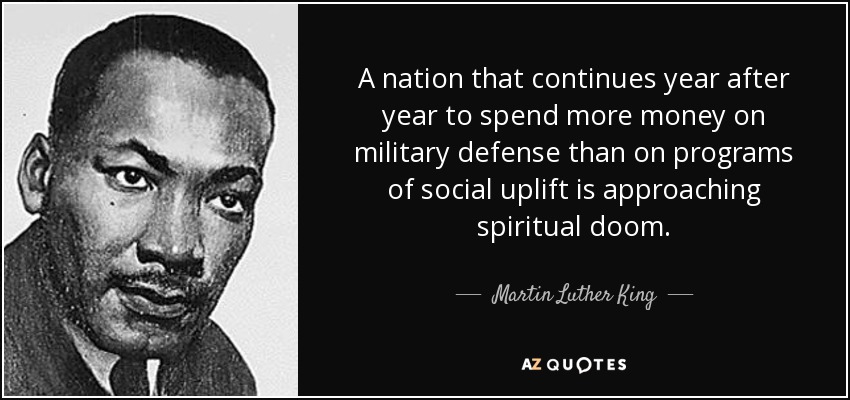
I just saw the Al Sharpton and Corey Stewart interview on MSNBC (weeks ago) and I wasn't surprised at Stewart's lies and exaggerations. Stewart didn't talk about the issues, but promoted the lies that we shouldn't talk about race constantly and his minimizing of the epidemic of racial oppression in the world. The reality is that there is no solution without dealing with race and class in America period. We, who are progressives, don't talk about race all of time. We talk about race, class, the environment, immigration, civil liberties, international issues, the court system police brutality, and other diverse issues that matter to the world. We just don't minimize racism in the world. Stewart defended his statements about praising traitors and slaveowners like Robert E. Lee and Stonewall Jackson. The truth is that the Confederacy was based on not only treason, but on racism and slavery as found in their own documents. I read their documents promoting slavery as well. Not to mention that Stewart didn't talk about solutions like Medicaid expansion, investments in poor plus rural communities, funding infrastructure, using public funds to promote smaller class sizes and mentors involving education, and addressing police brutality. He listed the same old far right wing talking points (in fear mongering about immigration when undocumented immigrants are never a majority of murderers. In fact, Corey ignores how babies, who are immigrants, are placed in internment camps since he wants to dehumanize people based upon immigration status, which is the essence of xenophobia. Right now, many Latino American citizens are questioned of their citizenship by authorities. The 1%, not undocumented immigrants, are responsible for rising income inequality and stagnant wages) and attacked Sharpton with personal attacks.
The new tactic by these conservatives is to bait progressives and anyone that disagrees with them, but we are wiser than that. We shouldn't take the bait. History teaches us that racism doesn't end by being askance or ignoring issues of race. It is by confronting systems of racial oppression and any form of oppression in order to achieve a true system of justice. Moderation and pressure less persuasion don't work. We fight for our freedom, we demand for our rights, and we believe in our cause. The interview shows how progressives and any freedom fighter should respond when debating a neo-Confederate far right extremist like Corey Stewart (whose views are just like the views of the alt right. Corey supports Trump as well. Trump is an overt racist). It is wrong for taxpayers to fund Confederate statues on public lands. Confederate statues are like Nazis statues. Confederates were domestic terrorists. Unlike Stewart, I was born and raised in Virginia for real. My relatives have lived in Southampton County and Cape Charles. This is my state. I know of the history of my state and we have real issues here. Also, I recognize the fact that many Virginians reject Stewart's deceptions and believe in human freedom for people without bigotry. I reject Corey's agenda completely and I believe in black liberation 100%.


Beijing
Beijing is a national and international city. A powerful economy, millions of residents and technological innovation define its infrastructure. It has existed for many millennia among dynasties, wars, and lot of social changes. Yet, it remains toady as the capital of the nation of China. Millions of people live in Beijing as engineers, teachers, political leaders, religious leaders, scientists, lawyers, judges, and others within a diversity of occupations. We are international as human beings too. The more that we study and understand international cities, the better we comprehend fully of our own human value as human beings. For the thousands of years of human history, Beijing remains as an important part of the Asian cultural experience. Business leaders readily visit Beijing for trade, for economic collaborations, and for the enactment of other projects. Tourists visit Beijing to witness its beautiful art, dance, architecture, and other aspects of its urban surroundings. It is a city in northern China governed by a direct controlled municipality under the national government (with 16 urban, suburban, and rural districts). It is China’s second largest city after Shanghai. It is a very large city with 6,487 square miles. The Mayor of Beijing is Chen Jining, the Congress Chairman is Li Wei, and the Conference Chairman is Ji Lin. Its architecture has both ancient and modern influences. Population-wise, it is one of the largest cities on Earth. In fact, it is the third most populous city in the world with over 21 million people. It has China’s largest state owned companies. It has advanced highways, high speed rail networks, etc. The city has the busiest subway on Earth and the second busiest airport in the world with the Beijing Capital International Airport. It has 91 universities too. Construction of multiple skyscrapers is part of its city as well. It has a long historical past and its future is filled with technological development.

The History of Beijing
Human beings have lived in China and including Beijing during prehistory spanning thousands of years. Many Paleolithic Homo sapiens lived in caves from about 27,000 to 10,000 years ago. 2,000+ Stone Age tools and bone fragments were discovered at a construction site at Wangfujing in the heart of downtown Beijing in Dongcheng District back in 1996. The artifacts date to 24,000 to 25,000 years ago. They are preserved in the Wangfujing Paleolithic Museum in the lower level of the New Oriental Plaza mall. People have discovered over 40 Neolithic settlements and burial sites throughout the municipality. The most notable include Zhuannian of Huairou District; Donghulin of Mentougou District; Shangzhai and Beiniantou of Pinggu District; Zhenjiangying of Fangshan; and Xueshan of Changping District. These sites indicate that farming was widespread in the area 6,000 to 7,000 years ago. Painted pottery and carved jade of the Shangzhai and Xueshan Cultures resemble those of the Hongshan Culture further to the north. Many mysteries surround the origins of the modern city of Beijing. There is the story of the epic Battle of Banquan. According to Sima Qian’s Records of the Grand Historian, it occurred during the 26th century B.C. The battle may have taken place near the Upper and Lower Banquan villages of the Yanqing County on the northwestern edge of Beijing Municipality. There was the victory of the Yellow Emperor over the Yan Emperor at Banquan. This caused the unity of the two Emperors’ tribes and gave rise to the Huaxia or Chinese nation. The Yellow Emperor defeated Chiyou and the Nine Li tribes at the Battle of Zhuolu, possibly at Zhuolu or 75 km (47 miles) west of Yanging in Hebei Province.
This victory opened North China to settlement by the descendants of the Yan and Yellow Emperors. The Yellow Emperor is said to have founded the settlement of Youling (幽陵) in or near Zhuolu. The sage-king Yao founded a town called Youdu (幽都) in the Hebei-Beijing region about 4,000 years ago. You (幽) or Youzhou (幽州) later became one of the historical names for Beijing. Yuzishan, in Shandongzhuang Village of Pinggu County, in the northeastern fringe of Beijing Municipality, is one of several places in China claiming to host the Yellow Emperor's Tomb. Yuzishan's association with Yellow Emperor dates back at least 1,300 years when Tang poets Chen Zi'ang and Li Bai mentioned the tomb in their poems about Youzhou.

During the 11th century B.C., the Zhou dynasty absorbed the Shang dynasty. Much archeological evidence has been found during this era. According to Sima Qian, King Wu of Zhou, in the 11th year of his reign, deposed the last Shang king and conferred titles to nobles within his domain including the rulers of the city states Ji (蓟/薊) and Yan (燕). According to Confucius, King Wu of Zhou was so eager to establish his legitimacy that before dismounting his chariot, he named the descendants of the Yellow Emperor as the rulers of Ji. He then named his kinsman, Ji Shi, Duke Shao of Zhou, as the vassal of Yan. Ji Shi was preoccupied with other matters and dispatched his eldest son, Ji Ke, to take the position. Ji Ke, is considered the founder of the Yan State. Bronzeware inscriptions have confirmed these events described in Sima Qian's history. Since the dates in Sima Qian's history before 841 BC have not been definitely matched to the Gregorian Calendar, the Beijing Government uses 1045 BC as the official estimate of the date of this occasion. It is believed that the seat of Ji, called the City of Ji or Jicheng (蓟城/薊城), was located in the southwestern part of present-day urban Beijing, just south of Guang'anmen in Xicheng and Fengtai Districts. Several historical accounts mention a "Hill of Ji" northwest of the city, which would correspond to the large mound at the White Cloud Abbey, outside Xibianmen about 4 km (2.5 mi) north of Guang'anmen. South and west of Guang’anmen, roof tiles used for palace construction and dense concentrations of wells lined with ceramic ring tiles have been discovered. There was the capital city of Yan back then as well-being 28 miles to the south of Ji. The state of Yan grew larger and was one of the seven major powers during the Warring States period (473-221 B.C.). It was from the Yellow River to the Yalu. They had walls to defend themselves from invasions from the Shanrong steppe nomads. The Qin ended Yan in 222 B.C. Qin conquered other states and declared himself to be the First Emperor.

During the first 1,000 years of Chinese imperial history, Beijing was a provincial city on the northern part of China. The Qin dynasty allowed Beijing to have 2 out of 48 commandries. The First Emperor visited Ji in 215 BC and, to protect the frontier from the Xiongnu, had the Great Wall built in Yuyang Commandery and fortified Juyong Pass. The Han dynasty came after Qin existed. Many more dynasties existed like the Liao, Song, and Jin dynasties. During the 1200’s, Beijing was ruled by the Mongols, who was a tribal, nomadic people from the Mongolian Plateau and southern Siberia. In 1211, the Mongols led by Genghis Khan, took revenge against the Jin by invading northern China. By 1213, he had controlled most of Jin territory north of the Yellow River with the exception of the capital Zhongdu. In March 1214, he set up headquarters in Zhongdu's northern suburbs and with brother Hasar and three eldest sons, Jochi, Chagatai and Ögedei, began to besiege the city. Under the Yan dynasty, Kublai Khan made Beijing the capital of the Yuan dynasty. The city further developed and later the Ming Dynasty transpired. By the 1600’s, more and more Europeans visited Beijing constantly. The Qing dynasty was prominent too. By the late 1700’s and early 1800’s, the British wanted access to Chinese resources. The Chinese were hesitant in doing so, so the Opium Wars existed between the British Empire and China. In 1860, during the Second Opium War, Anglo-French forces annihilated the Qing army at Baliqiao east of Beijing. They captured the city and looted the Summer Palace and Old Summer Palace. The British consul Lord Elgin ordered the burning of the Old Summer Palace in retaliation of Qing mistreatment of Western prisoners. He spared the Forbidden City, saving it as a venue for the treaty-signing ceremony. Under the Convention of Peking that ended the war, the Qing government was forced to allow Western powers to establish permanent diplomatic presence in the city. The foreign embassies were based southeast of the Forbidden City in the Beijing Legation Quarter. The Boxer rebellion dealt with Chinese vs. Western forces over culture, land, and resources.
The Qing dynasty was overthrown in the Xinhai Revolution of 1911 but the capital of the newly founded Republic of China remained in Beijing as former Qing general Yuan Shikai took control of the new government from revolutionaries in the south. Yuan and successors from his Beiyang Army ruled the Republic from Beijing until 1928 when Nationalists reunified through the Northern Expedition and moved the capital to Nanjing. Beijing was renamed Beiping. In 1937, a clash between Chinese and Japanese troops at the Marco Polo Bridge outside Beiping triggered the outbreak of the Second Sino-Japanese War. Japanese forces conquered China until 1945. After that, civil war existed between Chinese nationalists and the Communists. The Communists won in 1949 and Beijing was the capital of the People’s Republic of China to this very day.
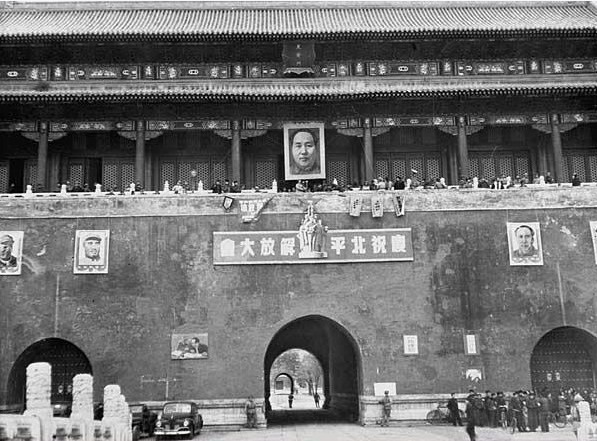
Mao Zedong was the famous leader of Communist China. Beijing’s government was centralized. Infrastructure grew like the development of the Great Hall of the People, National Museum of China, the Beijing Railway Station, the Beijing Military Museum, the Wangfujng Department Store, and the Beijing Museum of Natural History. Opium was banned in 1952 along with prostitution too. Tiananmen Square was used for public rallies and parades. Mao’s controversial Great Leap Forward wanted greater agricultural output, but it failed since it involved a misallocation of resources and it ruined infrastructure development. The Cultural Revolution also failed in China since its involved violations to democratic rights. There is nothing wrong with promoting Chinese culture in China, but Mao went too far with his actions via the Cultural Revolution. Many people suffered public humiliation, beatings and extrajudicial detentions at the hands of Red Guards and rebels. Many historical sites, including those designated by the city's historical protection bureau, were damaged or destroyed in the mayhem. Landmarks such as the Temple of Heaven, Beihai, Old and New Summer Palaces, Ming Tombs, Yonghe Lamsery and the Great Wall were also targeted. Virtually all houses of worship were shutdown. The Forbidden City was protected on the orders of Premier Zhou Enlai. Many city streets were renamed after revolutionary slogans. The Red Guards sought to rename the city itself, East is Red City.
In 1968, Mao ordered the military to take control of government, universities and factories and had the Red Guards disband and leave the city for the countryside where they would "undergo reeducation from the peasants". Hundreds of thousands of educated youth from Beijing were sent to rural and pastoralist areas. The Cultural Revolution exacerbated tensions with the Soviet Union and some 300,000 city residents were mobilized to build elaborate underground bunkers designed to shelter up to 40% of the city's population in the event of a nuclear attack. Beijing's Underground City, built from 1969 to 1979, was later converted to underground shopping centers and a museum.
At the Ninth Party Congress held in Beijing in April 1969, Mao declared the Cultural Revolution completed and named Lin Biao as successor. But on September 13, 1971, Lin died in a plane crash as he tried to flee to the U.S.S.R. following an unsuccessful coup plot against Mao. After Lin's death, colleges were reopened to "Worker-Peasant-Soldier students" and some of the purged old guard leaders such as Deng Xiaoping were partially rehabilitated, but radical Gang of Four, led by Jiang Qing, continued to hold sway. By 1972, Nixon made his historic visit to Mao in China at Beijing. He visited the Great Wall. Nixon received a pair of giant pandas from the Beijing Zool. This was the beginning of the normalizing of China/U.S. relations. Mao died on September 9, 1976.

Deng took over and made economic reforms. College entrance exams were restored in 1977. The Beijing Spring existed from the late 1970’s and the 1980’s. They wanted democracy in China. Victims of the Cultural Revolution sought justice—some called for the release of those jailed in the April Fifth Incident of 1976; some criticized Mao and Hua Guofeng's continuation of the Maoist line; and others complained of youth unable to return from the countryside. Many people of the Beijing Spring wanted the freedom of speech and the right to evaluate state leaders as promoted by the China Human Rights Association. The famous 1989 Tiananmen Square protests promoted freedom. It ended in bloodshed on June 3–4, as conservative leaders ordered a military crackdown of unprecedented force. The confrontation in Tiananmen Square was the culmination of a decade-long debate within the Communist Party and society over the freedom of expression and the course of political reform.
As liberal leaders Hu Yaobang and Zhao Ziyang guided the country through economic reforms, conservative leaders pushed back with a Campaign against "Spiritual Pollution" in 1983. Paramount leader Deng Xiaoping sided with the reformers and ended that campaign.

On January 1 and 2, 1987, several hundred students attempted to march on Tiananmen Square in defiance of orders of the city government. Zhao Ziyang was placed under house arrest for the remainder of his life. Zemin assumed the position of General Secretary of the Communist Party of China. Martial law was lifted on January 11, 1990. In subsequent years, first-year students at colleges in Beijing were required to undergo a year of military training. The protesters inspired democratic movements worldwide. The 1990’s saw the city grow. Rapid economic grew existed by the 1990’s and the early 2000’s. Residential and commercial districts developed. On September 1995, the city hosted the United Nation's Fourth World Conference on Women and a parallel gathering of non-government organizations in Huairou District. On October 1, 1999, the city celebrated the 50th Anniversary of the founding of the People's Republic with a parade, the first since 1984. By 2008, Beijing hosted the 2008 Summer Olympics and the Paralympics Games. Under the motto "New Beijing, Great Olympics", the city pledged that holding the Games in China for the first time would promote not only the city's economy but also education, health and human rights of its residents. Beijing prevailed over Paris, Toronto, Istanbul and Osaka with an absolute majority of votes in the second round of balloting. To this very day, Beijing still has to deal with heavy traffic, pollution, and the destruction of historic neighborhoods.
During the 2010’s, Beijing’s economy grew rapidly. The government’s large economic stimulus programs helped the city gain wealth in response to the global recession. State owned enterprises concentrated in the city too. The catch is that property prices grew because of the economic growth. It became one of the most expensive cities in the country. The city pledged to create low income housing. The other program was the displacement of migrant workers in Beijing for classist motivations. This shows that economic inequality is a global evil that must be addressed. Millions of Beijing’s resident continues to live and work.


The Culture of Beijing
The culture of Beijing is old and diverse. There is a Beijing dialect for those human beings who live in Beijing. That dialect is part of the Mandarin subdivision of spoken Chinese. This speech is the basis for Putonghua. That is the standard spoken language used in mainland China and Taiwan (and one of the four official languages of Singapore). Rural areas of Beijing Municipality have their own dialect like those in the Hebei province, which surrounds Beijing Municipality. Beijing has opera and other forms of theater. Beijing opera is performed through a combination of song, spoken dialogue, and codified action sequences. These sequences use gestures, movement, and fighting plus acrobatics. Much of Beijing opera is carried out in an archaic stage dialect quite different from Modern Standard Chinese and from the modern Beijing dialect. Beijing cuisine is the local style of cooking. Peking Roast Duck is perhaps the best known dish. Fuling Jiabing, a traditional Beijing snack food, is a pancake (bing) resembling a flat disk with a filling made from fu ling, a fungus used in traditional Chinese medicine. Teahouses are common in Beijing.
The cloisonné (or Jingtailan, literally "Blue of Jingtai") metalworking technique and tradition is a Beijing art specialty, and is one of the most revered traditional crafts in China. Cloisonné making requires elaborate and complicated processes which include base-hammering, copper-strip inlay, soldering, enamel-filling, enamel-firing, surface polishing and gilding. Many nightlife locations in Beijing include Houhai, Sanlitun, and Wudaokou. The Forbidden City is one large place representing the cultural center of Beijing. Since the Ming and Qing dynasties, it has existed. The Forbidden City has the Palace Museum, which has imperial collections of Chinese art. Surrounding the Forbidden City are several former imperial gardens, parks and scenic areas, notably Beihai, Shichahai, Zhongnanhai, Jingshan and Zhongshan. Gardening art is found in many of these places. In the modern era, Zhongnanhai has also been the political heart of various Chinese governments and regimes and is now the headquarters of the Communist Party of China and the State Council. From Tiananmen Square, right across from the Forbidden City, there are several notable sites, such as the Tiananmen, Qianmen, the Great Hall of the People, the National Museum of China, the Monument to the People's Heroes, and the Mausoleum of Mao Zedong. The Summer Palace and the Old Summer Palace both lie at the western part of the city; the former, a UNESCO World Heritage Site, contains a comprehensive collection of imperial gardens and palaces that served as the summer retreats for the Qing imperial family. The Temple of Heaven is found in southeastern Beijing. Many ancient emperors from the Ming and Qing dynasties gave annual ceremonies of prayers to Heaven for a good harvest. Most people in Beijing embrace Chinese folk religion and atheism. There are many Buddhists, Muslims, and Christians in Beijing as well. A high speed rail system is very commonplace in Beijing and in the rest of China.
By Timothy
No comments:
Post a Comment